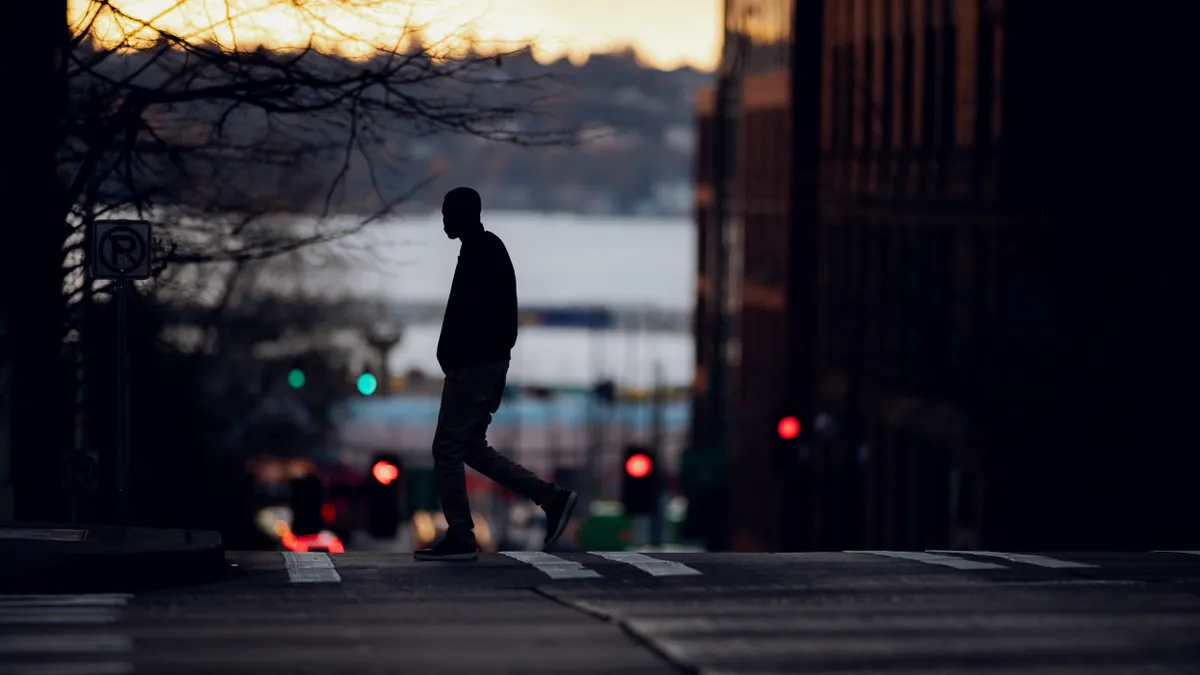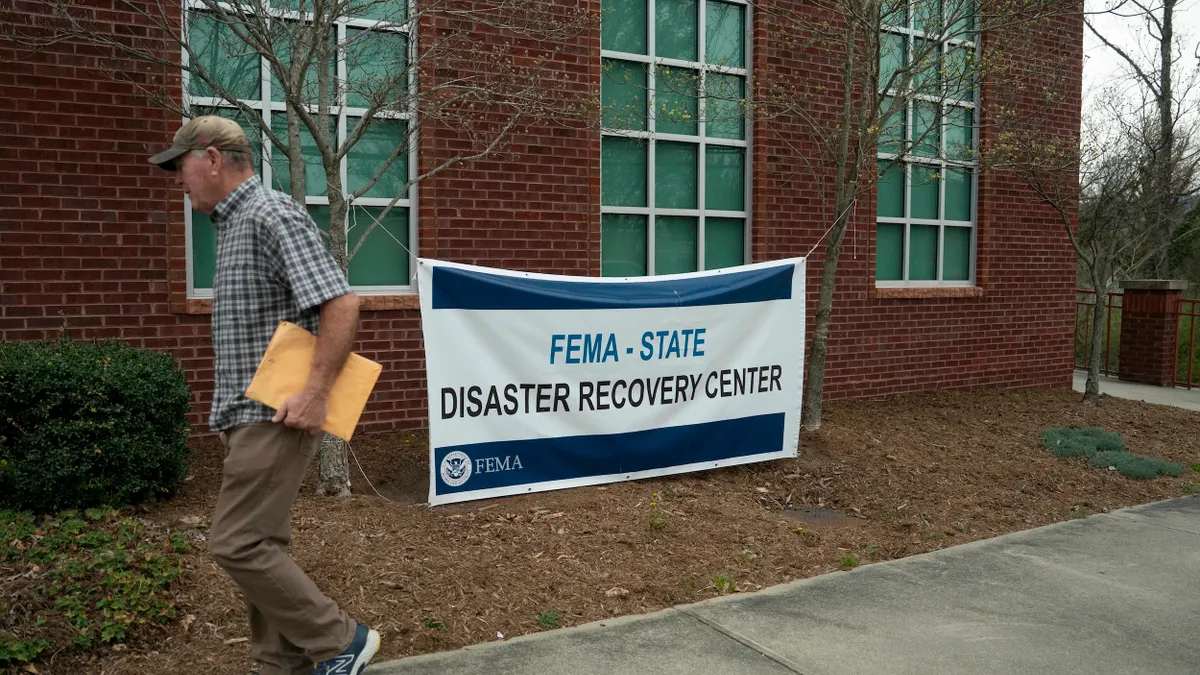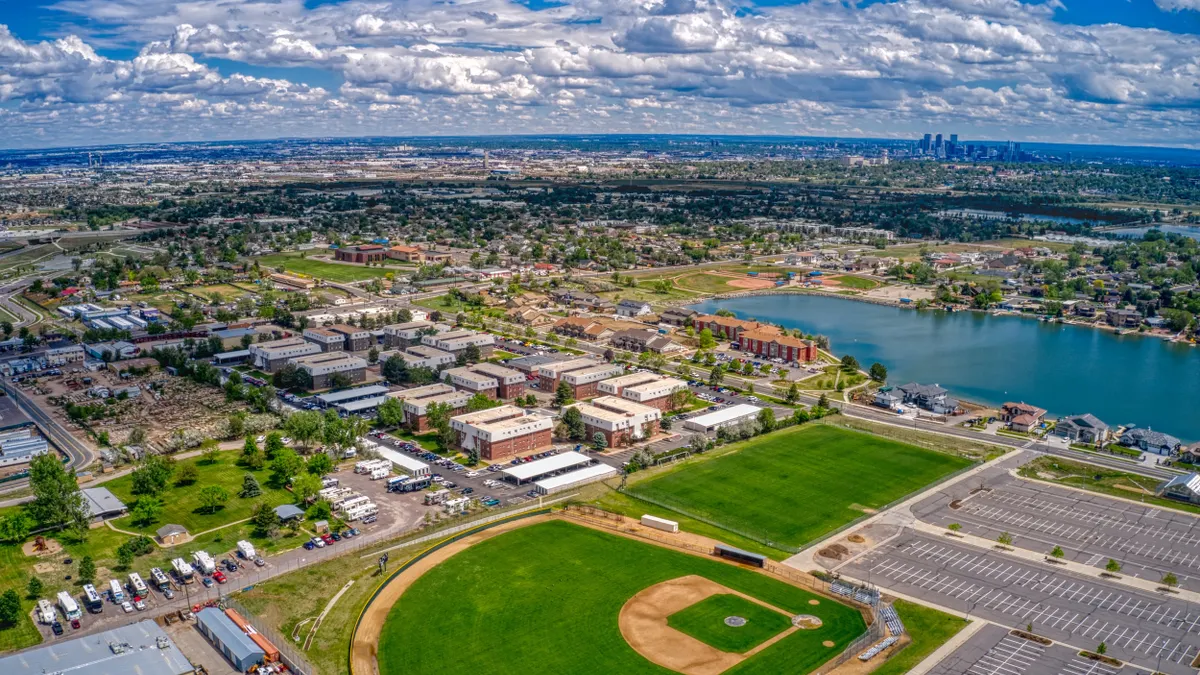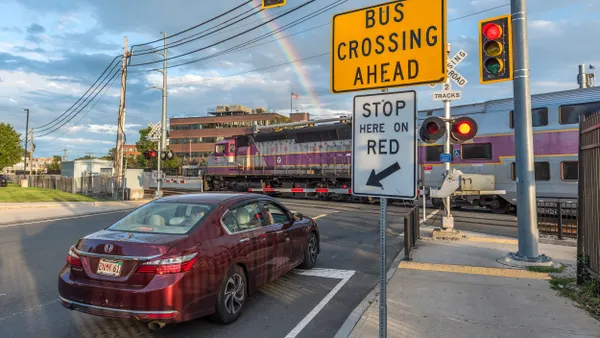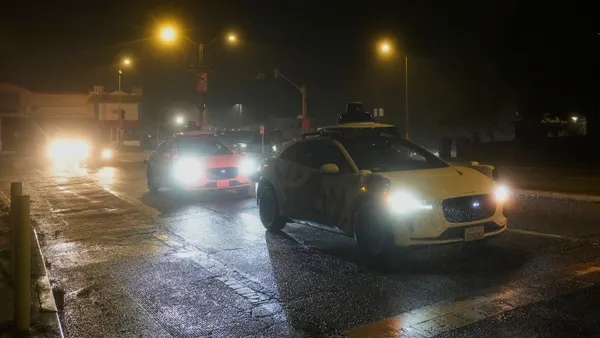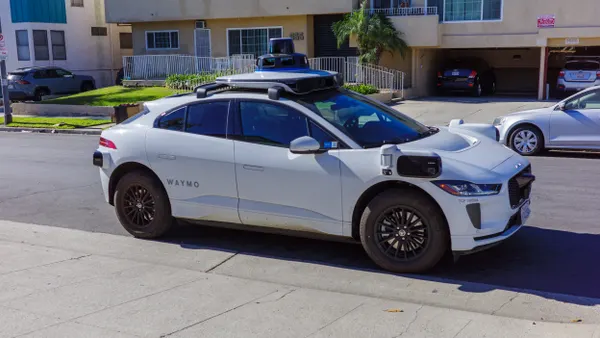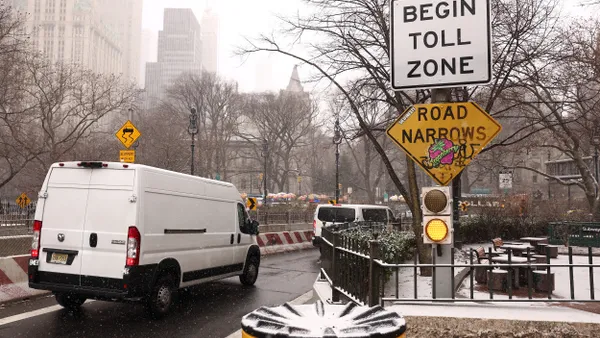Dive Brief:
- Pedestrians are at greatest risk of being struck by a motor vehicle while crossing an urban arterial road at night or in low-light conditions, according to a study released today from the AAA Foundation for Traffic Safety. Arterial roads are those that have multiple lanes, high traffic volume and limited access, much like a freeway, but they also have intersections, while freeways do not.
- U.S. pedestrian fatalities rose more than 80% from 2009 to 2022, according to data from the National Highway Traffic Safety Administration. The AAA study found that nearly the entire increase in pedestrian deaths since 2009 occurred on urban arterial roads after dark.
- Pedestrian crashes were disproportionately higher in socially and economically disadvantaged communities in the three cities studied in the report. These were areas where residents had less vehicle ownership and thus relied more on walking, especially to reach public transportation, AAA stated in a news release.
Dive Insight:
Pedestrian deaths were 3% lower in the first half of 2024 compared with the same period in the prior year, according to the latest available data from NHTSA, but they remain near the highest levels seen in the last three decades.
A 2022 Smart Growth America report found that Sun Belt cities often have higher pedestrian fatality rates, which it attributed to multiple factors. These cities have increasing populations, are often considered “car-centric” cities with less public transportation and see average traffic speeds that are greater than Northern cities such as Boston, Chicago or Seattle, according to a Streetlight Data analysis.
The AAA report studied Albuquerque, New Mexico; Charlotte, North Carolina; and Memphis, Tennessee. It found that most pedestrian deaths happened more than four miles from the city center. Memphis had the highest pedestrian fatality rate in 2022 of U.S. cities with populations over 500,000 in a Smart Cities Dive analysis published in 2023.
To reduce pedestrian fatalities, the AAA report recommends that state and local governments work together to invest in life-saving solutions where they will have the greatest impact, regardless of who owns a specific road. However, the report also notes that cities can face high costs for infrastructure upgrades, barriers to improving safety on state-controlled roads and public resistance to change.
“Reducing the spike in pedestrian deaths requires data-driven investments where they matter most,” Jake Nelson, AAA’s director of traffic safety advocacy said in a statement. “If safety is truly a top priority for decision-makers, we should expect greater investments in historically underinvested communities where a disproportionate number of pedestrians are hit and killed.”



